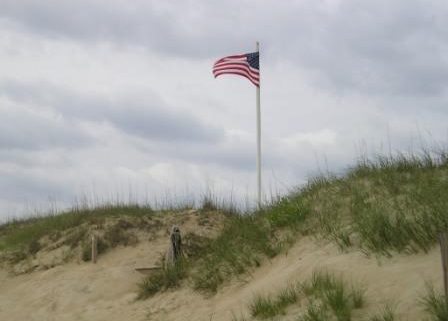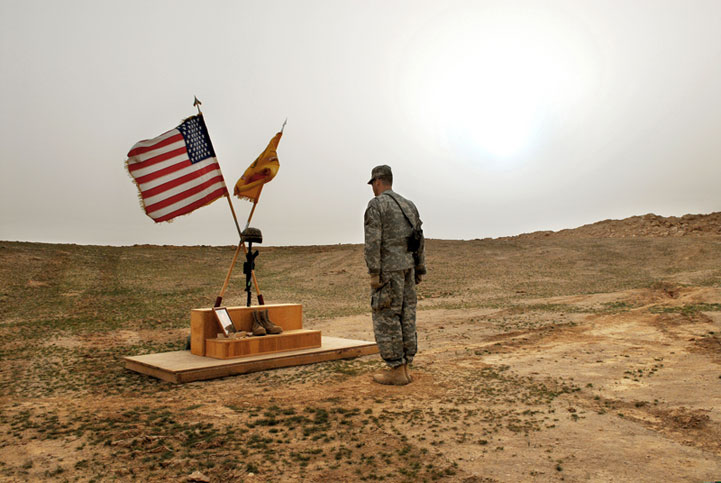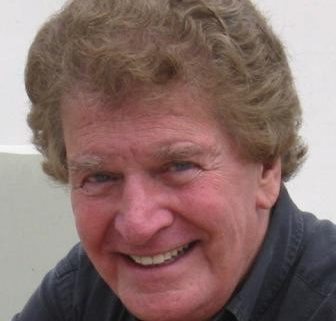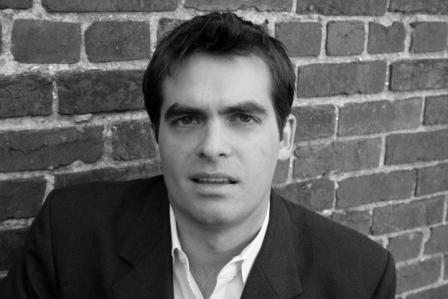Novelist, screenwriter, playwright Thomas B. Sawyer was Head Writer/Showrunner of the hit CBS series, Murder, She Wrote, for which he wrote 24 episodes. Tom has written 9 network TV pilots, 100 episodes, and has been Head Writer/Showrunner or Story Editor on 15 network TV series. He wrote, directed and produced the cult film comedy, Alice Goodbody, is co-librettist/lyricist of Jack, an opera about John F. Kennedy, backed by the Shuberts, that has been performed to acclaim in the US and Europe. He is publisher of Storybase 2.0 writer’s software. The best-selling mystery/thriller, The Sixteenth Man, is his first novel. Both his book, Fiction Writing Demystified, and Storybase are Writer’s Digest Book Club Selections. His new thriller, No Place to Run, will be published in April, 2009. He’s taught writing at UCLA, at other colleges and universities, at numerous major writers conferences, and online at Writers University. Mr. Sawyer has been nominated for an Edgar and an Emmy.
www.ThomasBSawyer.com
TAKE SIXTM with author Thomas B. Sawyer
What personal experiences have inspired your interest in conspiracy theories in general, specifically those centered around 9/11?
All of us view the world, and process what we see, hear, and read, through our own filters. Mine have, since childhood, invariably caused me to question Authority – to regard it with automatic skepticism and/or outright contempt.
From the “sneak” attack on Pearl Harbor to the “single-gunman” take on the JFK Assassination to the Tonkin Gulf “Incident” and the many other lies we’re handed, I continue to be boggled by how readily – eagerly, really – the public buys into them. Such comforts have never been among my personal requirements.
Thus, watching that indelible spectacle on 9/11, I knew I was perceiving it differently than most people. Starting with the certain knowledge that I was witnessing the single most dramatic Statement of Rage in the history of the world – and the question it instantly raised: what does it take to make people that angry?
That was quickly followed by my next question: is anyone in America going to ask the first one?
The answer, which I saw just as certainly was – and continues to be: No. Main reason: America is the World Capital of Denial. We seem congenitally unable/unwilling to question ourselves, or our government’s true motives. And it’s nothing new, for us, or for other cultures. People love catch-phrases because they enable them to pretend, to BS themselves – from The Crusades, to Manifest Destiny to Jihad to fighting godless Commies to Operation Desert Storm, people are pushovers for slogans that excuse their blood lust. And the U.S. – always The Good Guys – is the reigning champion of such self-deception, which the Military/Industrial types – read neo-cons – have turned into a science.
Additionally, I was beyond half-certain that there had to be more to it than a few crazies hijacking airplanes. And as I began researching it a few years later for my novel, any such doubts quickly vanished.
Did you foresee the long-term results of 9/11 – such as Iraq and The War on Terror?
Yes. But I have to say, it did not require a mind-reader, nor any great insight. Only a glance at our history. Two days later I wrote an essay in which I [easily] predicted that we would choose a designated Bad-Guy – and have a war. It also included some unflattering remarks about what America had become over the previous 56 years, since the end of WWII and the birth of the Military/Industrial complex. And about that, it touched on our ongoing permanent State of War and the fact that our prosperity since then has been based not on building automobiles and refrigerators, but rather on our having become the World’s chief arms-producer, a commodity that requires a war every few years in order to justify replenishment.
Moreover, I alluded to our continuing support of national leaders, particularly in the Middle East, no matter how corrupt nor vicious toward their own people, as long as they guaranteed the flow of oil. That, I submit, is what has fostered the justifiable anger toward this country. And our national opacity toward such things is what brought about 9/11.
When I showed the essay to my son, he said: “Good. Don’t send it to The New York Times, or to any of your friends.” I took his advice.
No Place to Run questions our government and its practices. Is this book simply anti-Establishment, or do you think this scenario could happen in today’s world?
I have absolutely no doubt that the conspiracy I posit in No Place to Run is true. More than that, I find it difficult to imagine that anyone, on reviewing as I did the events of 9/11, what led to them, and what has followed, could arrive at any other conclusion.
First, the fact that the future hijackers were known to be taking flight-training – and supposedly not-monitored, plus – on the day – the lack of USAF fighter-planes in the Northeast Corridor and in Washington, D.C., and the “confusion” in which long-standing protocols about what should happen when airplanes are hijacked or even go off-course were ignored, it was clear then – and now – that something was certainly not kosher.
In the writing-trade, we refer to such things as “plot-conveniences,” devices that, in fiction, are so obvious that they are to be scrupulously avoided. The entire 9/11 scenario – including but far from limited to the above, as well as the highly questionable collapse of the Towers, and the cover-up of Flight 93’s “crash” in Pennsylvania – contains far too many such “just a minute now…” red-flags.
No Place to Run features a strong female character, Claudia, who deals with tragedy and the loss of her former identity when she is placed in the witness protection program. What was the inspiration for her character and how were you able to get inside this character’s head?
My original concept was to tell the story of two fugitive brothers, but then I asked myself what if the older one was female? That seemed to offer fresher, more dramatic possibilities in terms of her vulnerability, and in the potential for an edgier, more interesting relationship between my two protagonists.
Moreover, since I had not created such a character before, I was drawn to the test of trying to do so, to make her believable.
You were Head Writer/Showrunner of the hit CBS series, Murder, She Wrote. What led you to the thriller-genre of commercial fiction?
I guess that if I have a philosophy of life it’s that – except for sex – once I know how to do something, I need more of a challenge. Even when I was writing each of those 24 Murder, She Wrote scripts, I was sneakily raising the bar for myself if only to keep it interesting for me.
My choice of the thriller-genre as a vehicle for making a Statement dates to my love of such works since childhood. Starting I suppose with Eric Ambler, who practically invented the form, through Le Carre´ and Grisham, writers have been using thrillers in this way. Something, incidentally, that’s a bit harder to do – but not impossible – in straight murder-mysteries, though I did manage to pull it off a few times in TV. In one episode of Murder, She Wrote, titled Dead Eye, I had Jessica Fletcher almost solve the JFK Assassination.
Do you believe that 9/11 was a conspiracy? What, if any, theories out there do you find plausible?
As mentioned above, I absolutely, passionately believe that 9/11 was enabled by forces and interests high up in America – both government and commercial – people who knew it was in work, could have prevented it, but decided instead that it offered an excuse for another war – something upon which our entire economy and incredible prosperity has depended since WWII. Something that, as 2001 neared its end, it was time for once again.
As said, making that point was my major reason for writing No Place to Run. It struck me that I might try via popular fiction to reach even a few people who wouldn’t normally view things that way, and hopefully cause them to think about what America has become. To ask questions they might not have considered before.
That the Twin Towers fell may or may not have been part of the plan. It’s an area I skirt in the book, though toward the end my major, massively W.A.S.P. Heavy concedes that those 3,000 deaths were, in fact “…a mitzvah – for both sides…”
And incidentally, the 9/11 Commission Report, which appeared at about the time I was finishing No Place to Run, failed to refute any of what my novel posits about the events of that day.
Did you encounter resistance to your somewhat radical approach when you tried to find a publisher for No Place to Run?
Absolutely. The kinds of questions I raise, the arguments put forward in this novel, make a lot of people uncomfortable. It took three years before I was able to hook up with Sterling & Ross. During that time I received more than one response such as the following, from the head of a major New York publishing house, who wrote to my agent: “…while I really like Tom’s writing, I have to say that I am offended by his premise…”
Those, I submit, are the very buttons I desperately want this novel to push. And I believe that Sterling & Ross is truly daring in agreeing to publish No Place to Run. To my knowledge, while there is a lot of nonfiction out there about 9/11, this is the first novel to suggest that all was not as the 9/11 Commission would have us believe.
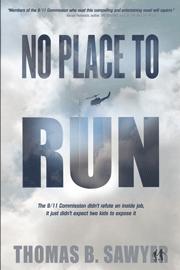
NO PLACE TO RUN is a thrill-a-minute ride toward the darkest alley in the darkest part of the American government – that place where the sins of our intelligence agencies finally meet the blinding light of day. Members of the 9/11 Commission who read this compelling and entertaining novel will squirm.
Gerald Petievich – Author of THE SENTINEL and TO LIVE AND DIE IN L.A.
A powerful thriller, No Place to Run grips you by the throat and doesn’t let go even after the breathless climax… because the questions it raises about hidden forces operating inside our government are staggering and important.
Ralph Pezzullo – New York Times-bestselling author of Jawbreaker
Gritty and suspenseful, NO PLACE TO RUN is a no-hold’s-barred journey into government, politics, and greed. From a family on the run to low people in high places, this is a sweeping story that will rivet you until the very end.
Gayle Lynds – New York Times-bestselling author of THE BOOK OF SPIES and
THE LAST SPYMASTER
There’s no place to hide in NO PLACE TO RUN, Tom Sawyer’s sizzling new thriller. Breakneck pace, a provocative theme, and crackerjack writing propel this baby!
Paul Levine – Bestselling author of ILLEGAL
Sawyer has turned the untold side of the 9/11 nightmare into a riveting page turner. If you aren’t already into conspiracies, this one will make you a believer!
William Link – Co-creator of MURDER, SHE WROTE and COLUMBO
Action is non-stop and relentless as this ultra-smart thriller’s luckless-but-never-hopeless young protagonists hit the ground running for their lives. NO PLACE TO RUN is a Sawyer specialty – the perfect blend of breathless suspense and inspired political savvy, topped with an eye-opening theory of what really led to the tragic events of 9/11.
Dick Lochte – Author of SLEEPING DOG and CROAKED!
No Place To Run proves that fiction is indeed more fun than reality. This tight, fast-paced thriller is stuffed with bad guys and plot twists that will keep you guessing until the last page and will cramp the fingers of conspiracy-addicted bloggers. Hop on board. It’s a hell of a ride.
D. P. Lyle, MD – Edgar nominated, Macavity winning author of Howdunnit: Forensics
NO PLACE TO RUN turns “paranoid conspiracy theory” into the entirely plausible. A page-turner, risk-taking, well-told and rich in compelling characters. A highly entertaining thriller, and more than a little disturbing.
Harley Jane Kozak – Winner of Agatha, Anthony and Macavity Awards, author of
A DATE YOU CAN’T REFUSE

